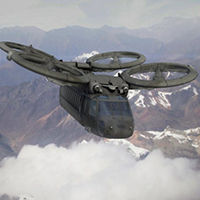US Army engineers define future aviation fleet

The U.S. Army science and technology community is charting the future of military vertical lift aviation that will enable warfighters to accomplish missions not possible today.
The Army, supported by NASA and the Navy, is combining its areas of technical expertise to accomplish the aggressive scientific and engineering goals necessary to develop a new fleet of joint aircraft, said Ned Chase, deputy program director of science and technology, or S&T, for the Joint Multi-Role Technology Demonstrator/Future Vertical Lift, also known as JMR TD.
JMR TD has been established to address several of the capability gaps that cannot be satisfied by updating the current fleet.
“Let’s figure out what we want this new aircraft to do, and let’s go out and prove that we have the technologies available to meet those requirements. That’s what we’re doing with JMR TD,” said Chase, with the Army Aviation and Missile Research, Development and Engineering Center, or ARMDEC, on Fort Eustis, Virginia.
The Department of Defense is using JMR TD to design and integrate the technologies that will eventually feed into the Future Vertical Lift, or FVL, and replace the military’s vertical lift fleet with a new family of aircraft.
LEVERAGING EXPERTISE FROM ACROSS ARMY S&T
The Aviation and Missile Research, Development and Engineering Center, or AMRDEC, one of seven centers and laboratories that make up the U.S. Army Research, Development and Engineering Command, also known as RDECOM, is leading the S&T effort.
Chase and his team are working closely with fellow scientists and engineers within RDECOM to conceptualize research and design the many technologies that will be necessary for this future vertical lift capability.
AMRDEC will leverage its expertise in aviation; however, the team will rely upon its peer organizations for the complementary pieces. For example, RDECOM’s Communications-Electronics Research, Development and Engineering Center at Aberdeen Proving Grounds, or APG, is the expert in areas such as communications systems, sensors and cameras, he said.
“The one thing that we’ve not done in quite a long time was demonstrate that we can build an aircraft from scratch that incorporates the individual technologies that we’ve been working on the past 25 years,” Chase said. “We have the capacity across AMRDEC to populate the aircraft with the right components–engines, rotors, structures, flight controls.
“We want to put together a roadmap to develop the radios, weapons, sensors and survivability equipment by drawing from RDECOM in preparation for FVL. We take their products and integrate them onto the platform itself. FVL is going to reflect the aggregate of RDECOM investment.”